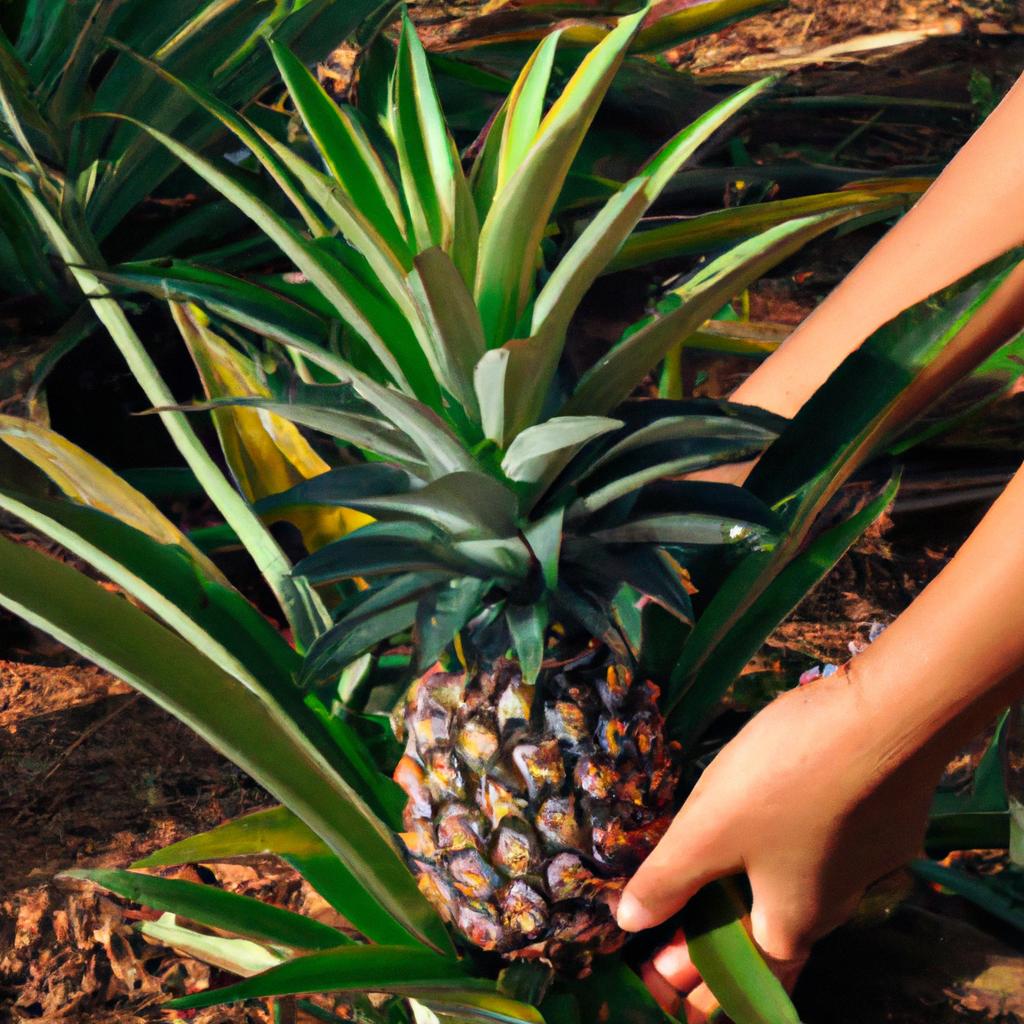The Ultimate Guide to Growing a Pineapple

Discover the secrets to successfully growing your own pineapple with this ultimate guide. From selecting the right variety to caring for your plant, this blog post will provide you with all the information you need to become a pineapple farming pro.
Choosing the Right Pineapple Variety
When it comes to growing pineapples, choosing the right variety is crucial. There are several different types of pineapples available, each with its own unique flavor and characteristics. Some popular varieties include the Smooth Cayenne, Golden Sweet, and Sugarloaf. Consider factors such as taste preference, growth habit, and disease resistance when selecting the variety that suits your needs best.
Another important consideration is whether you want to grow your pineapple from a pineapple top or a sucker. A pineapple top is the leafy crown of a pineapple fruit, while a sucker is a small shoot that grows from the base of the plant. Both options can be used to propagate a new pineapple plant, but the method of planting and care may differ slightly.
Preparing the Soil and Planting
To give your pineapple plant the best start, it's important to prepare the soil properly. Pineapples thrive in well-draining soil with a slightly acidic pH level. Before planting, clear the area of any weeds or grass and loosen the soil to promote root growth. If the soil in your area is heavy clay or sandy, consider amending it with organic matter such as compost or well-rotted manure.
When planting your pineapple, make sure to choose a sunny spot in your garden with good air circulation. Dig a hole that is slightly larger than the root ball of the plant and gently place the plant in the hole, making sure the soil is firmly packed around the roots. Water the plant thoroughly after planting to eliminate any air pockets and help the roots establish.
Providing Proper Watering and Sunlight
Watering is an essential aspect of pineapple care, as these plants require regular moisture to thrive. However, it's important to strike a balance and avoid overwatering, as pineapples are susceptible to root rot. Water your pineapple plant deeply once or twice a week, allowing the top few inches of soil to dry out between waterings. During hot and dry periods, you may need to increase the frequency of watering.
In addition to proper watering, pineapples also need adequate sunlight to grow and produce fruit. Ideally, they should receive at least 6-8 hours of direct sunlight per day. If you're growing pineapples indoors, place them near a south-facing window or provide supplemental grow lights to ensure they get enough light.
Fertilizing and Mulching Techniques
Fertilizing your pineapple plant is important to provide it with the necessary nutrients for healthy growth. Use a balanced fertilizer with equal amounts of nitrogen, phosphorus, and potassium. Apply the fertilizer every 2-3 months during the growing season, following the package instructions for application rates.
Mulching can also be beneficial for pineapple plants. Apply a layer of organic mulch, such as straw or wood chips, around the base of the plant to help retain moisture, suppress weed growth, and regulate soil temperature. Just make sure not to pile the mulch directly against the stem, as this can lead to rot.
Harvesting and Storing Pineapples
The moment of truth has arrived - it's time to harvest your pineapples! The ripeness of a pineapple can be determined by its color, aroma, and firmness. Look for pineapples with a golden color and a sweet, tropical scent. Gently tug on a leaf from the crown of the pineapple - if it comes out easily, the fruit is ready for harvest.
To harvest the pineapple, hold the fruit firmly and twist it off the plant. Be careful to avoid any contact with the prickly leaves. Once harvested, pineapples can be stored at room temperature for a few days to continue ripening. If you prefer a sweeter taste, you can store the pineapple in the refrigerator for a few days before consuming.
